A while back we published an article that discussed why aiming speakers in a properly designed car audio system was futile. As usual, we received a good deal of feedback about the piece. The comments ranged from the typical “that’s not how it works” to more scientific discussions about how even minor changes in placement had significant effects on imaging and soundstage position. So let’s dive deeper into this discussion to flesh out some of the finer details in speaker positioning.
Proper Audio System Design
The first thing we need to discuss is proper audio system design and component selection. To deliver the most realistic listening experience possible, you need to choose high-quality speakers. Speakers that add significant distortion will lack clarity and detail and render all other efforts futile. Forget the hype about anti-resonant baskets and fancy cones – the technologies that dramatically reduce distortion are motor upgrades like shorting rings and copper inductance-reducing caps.

ARC Audio, Hertz and Audison offer a variety of high-performance midrange drivers that are easily integrated into custom installations.
Next, the speaker system needs to be designed and integrated into the vehicle in a way that ensures the even distribution of sound through the listening environment. This typically involves using a subwoofer, a set of woofers or midbass drivers, midrange speakers and tweeters. As our article on directivity explained, below a frequency where the effective circumference of the cone is equal to the sound wavelength, the sound is emitted evenly in all directions — as such, tilting a speaker up or down won’t change its perceived frequency. Keep this in mind, as we’ll circle back to it shortly.
Lastly, the speakers need to be chosen so that the high-frequency driver operating in the adjacent frequency range can play low enough to ensure that directivity doesn’t become an issue. Unfortunately, this statement confirms that using a two-way front stage with a 6.5-inch woofer is difficult, as most tweeters bundled in component sets can’t play low enough.
Speaker Placement Matters
When we talk about speaker placement for the front stage of our vehicles, the options are typically a stock location in the lower part of the front door, a location in the middle or upper portion of the door, the dash or in a custom pod on the A-pillar. It should come as no surprise that every location has a benefit and an equal number of drawbacks.
For midbass drivers used in a three-way front stage, the door location often works well. Some will go further with the installation and have custom mounting solutions created in the kick panels. If this driver is going to play up to 400 or 500 Hz, this “farther away” position can help with the perceived depth of the soundstage.
The same concept applies to midrange drivers. If they are installed in the doors, as would be found in many Porsches and BMWs, the soundstage can appear to span the car, but comes from a position that’s in line with the steering wheel. Mounting the speakers in pods on the A-pillars can move that soundstage deeper into the dash. Finally, speaker positions in the corners of the dash, right at the base of the windshield, are about as far away from the listening position as is possible and help to create a soundstage that seems to come from the rear edge of the hood. Some listeners don’t concern themselves with the sound source, while others weigh it heavily in their system design considerations.
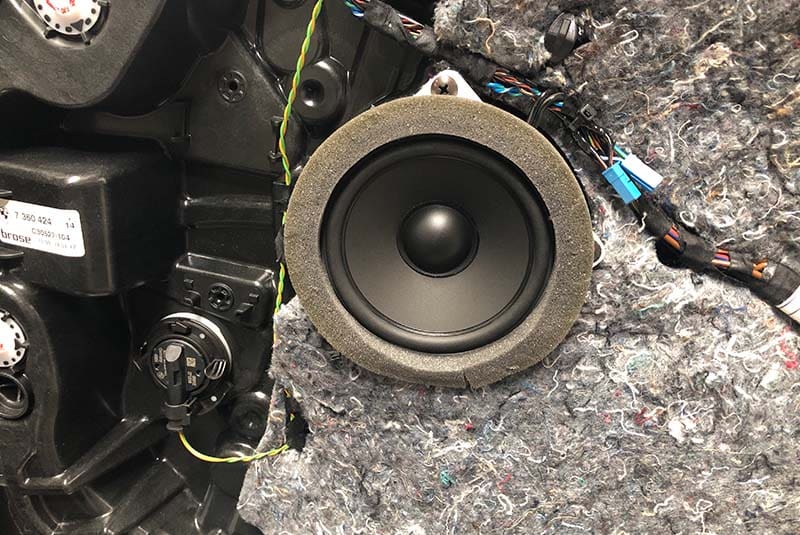
Extreme Audio in Midlothian, Virginia, upgraded this 2017 BMW 530i with a set of 4-inch Audiofrog midrange drivers in the stock door locations.
The angle at which tweeters are aimed matters. Suppose you want to have any chance of hearing the highest of frequencies. In that case, tweeters need to be aimed toward the listening position or pointed up into the windshield so their output can reflect off the glass and “spray” into the vehicle interior. Tweeters mounted in sail panels can help to increase the perceived width of a soundstage – another consideration in where the music seems to come from.
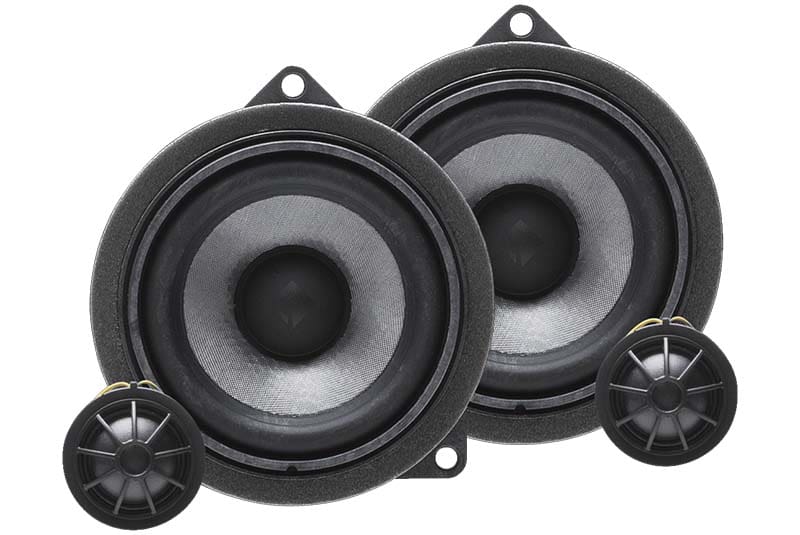
Rockford Fosgate offers their 4-inch T3-BMW2 speakers as a drop-in upgrade for 1-, 3-, 5-, 6- and 7-Series Sedans and the X1 SUV.
What About Fine-Tuning Mounting Angles?
Much of the feedback on our article about speaker directivity was targeted at the fact that car audio system performance changed based on the angle at which the speakers were mounted. We don’t dispute this for one second. How a speaker performs in terms of directivity is a constant. How sounds reflect off of nearby surfaces plays a huge role in what we hear, even after setting signal delays and calibrating the system with an equalizer.
Let’s say you have a speaker mounted in an A-pillar, and it’s aimed directly across the vehicle. There will be immediate reflections off the windshield and, a moment later, off the side windows. Given their proximity to the speaker, these reflections may be almost as loud as the sound coming directly from the speaker cone. Another moment later, there may be a reflection off the roof and the dash. Vehicles are very complex and behave differently than a listening room or recording studio.
If we tilt the speaker in or out, up or down, we can change the path lengths from the edge of the speaker to the surfaces off of which the sound will reflect. Even a fraction of an inch will change how the sound these speakers produce interacts with these surfaces.
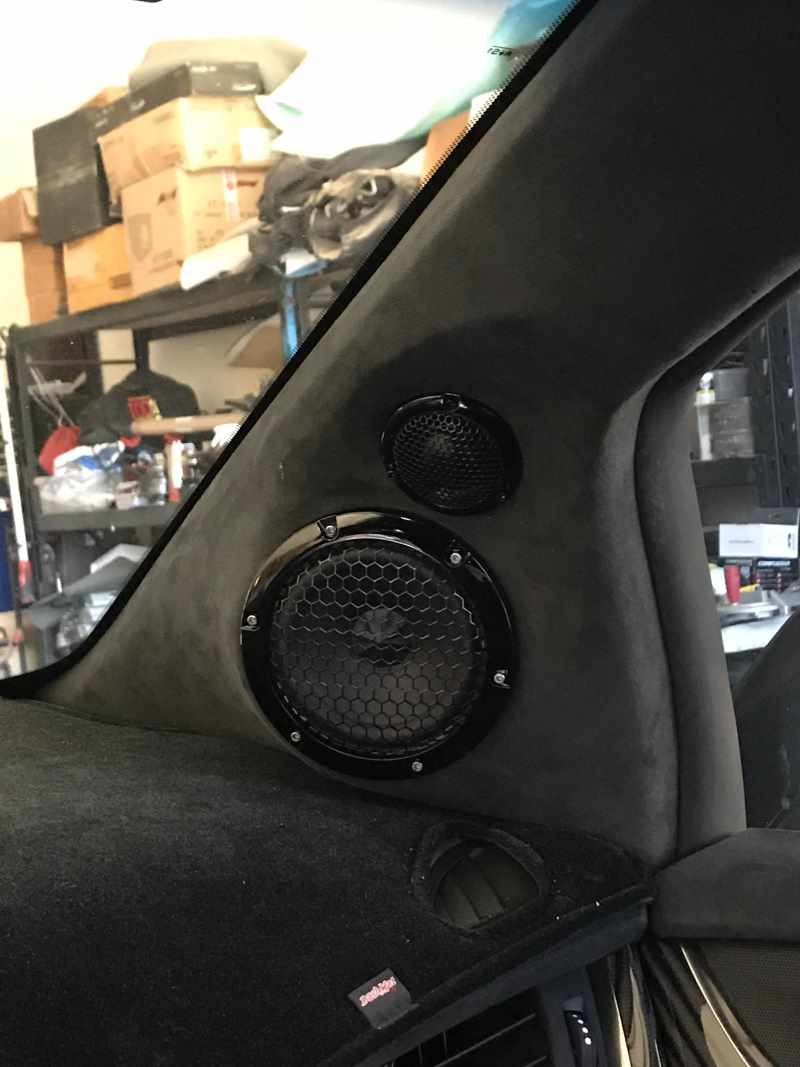
Autosound competition vehicles like Brian Mitchell’s Cadillac ELR often go through many A-pillar designs until one that balances every aspect of their performance is achieved.
Let’s Look at An Example
Let’s say you have a Porsche 911 or Boxster with a midrange speaker location in the middle of the door. A number of 2.5- and 3-inch midrange drivers will perform excellently in that location. On the inside of the car, there is almost nothing near the speaker that will cause a significant reflection, other than the smooth surface of the door panel itself. In terms of delivering a predictable performance that won’t require significant equalization, this is as close to an ideal mounting location as is possible in a car or truck.
Is this the perfect location, though? What if you like the sound to appear to come from the windshield or dash of the vehicle, or even out on the hood? Will this speaker location offer that? It isn’t very likely. The soundstage is apt to seem very shallow. Tonally, the system may sound excellent, and the lack of nearby reflections should offer impressive clarity.
If we put those same speakers in small enclosures up on the dash, just as we described above, the sound will reflect off of every surface imaginable. We can make the system sound good with an equalizer, but the interaction of multiple reflections won’t deliver the same amount of clarity.
Balance the Benefits and Drawbacks
The goal of any speaker system design (i.e., the placement and configuration of the drivers in a listening application) requires balancing the benefits and drawbacks of each location. The specialty mobile enhancement retailer you are working with can help explain each location’s benefits and disadvantages. Together, you can choose a solution that will deliver the sonic performance and aesthetics you want from your upgrade.
This article is written and produced by the team at www.BestCarAudio.com. Reproduction or use of any kind is prohibited without the express written permission of 1sixty8 media.
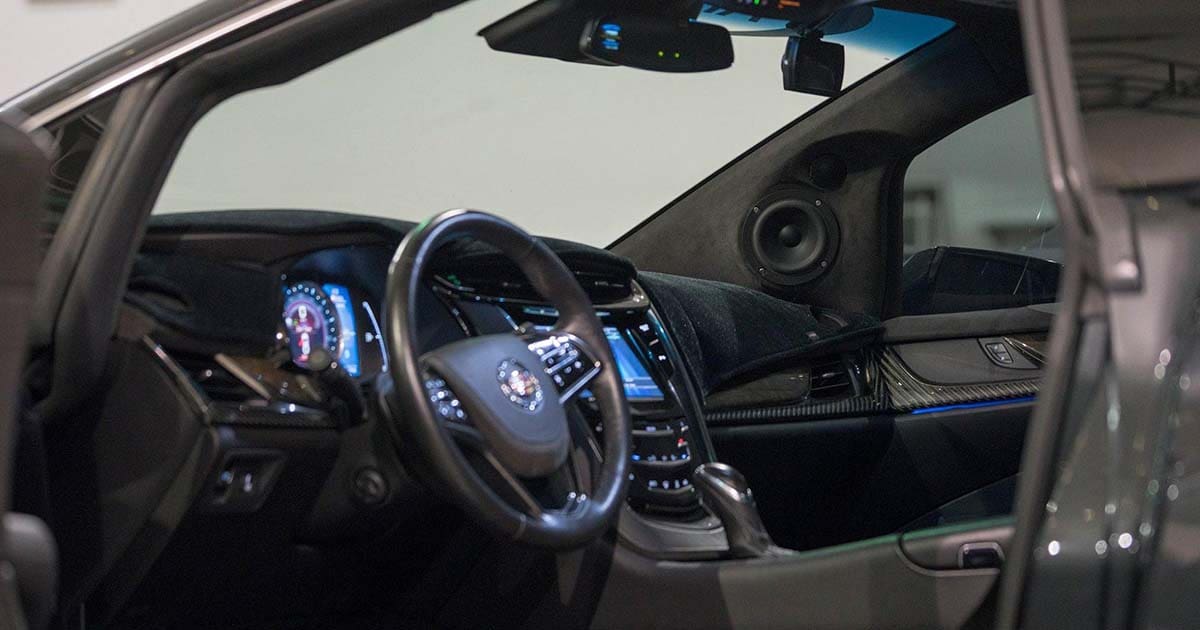
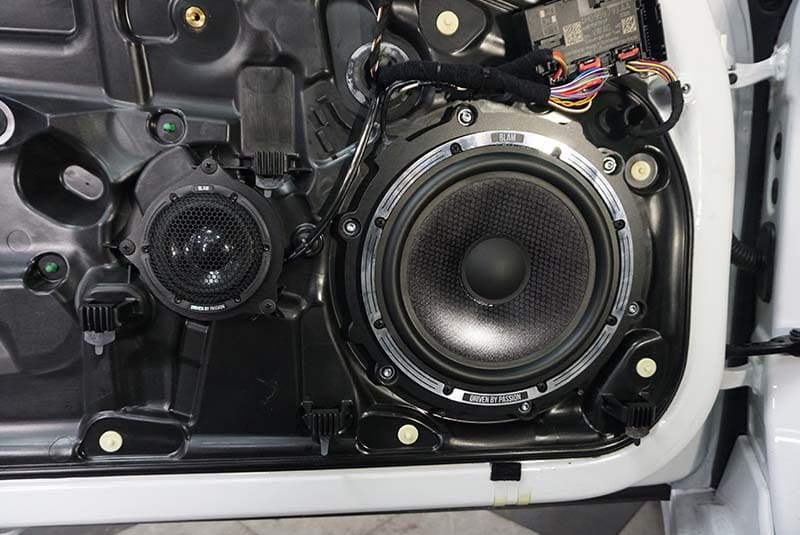

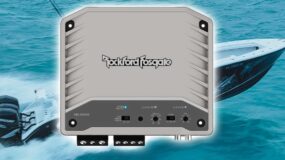
Leave a Reply